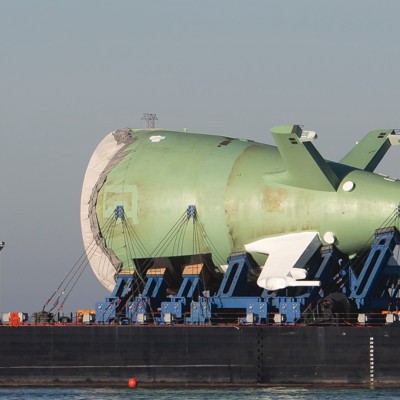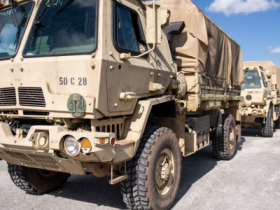The U.S. Navy’s next ballistic-missile submarine is already late and over budget—and the actual overrun might nearly quintuple the service’s projections, a government watchdog agency says.
“Our independent analysis calculated likely cost overruns that are more than six times higher than Electric Boat’s estimates and almost five times more than the Navy’s. As a result, the government could be responsible for hundreds of millions of dollars in additional construction costs for the lead submarine,” the Government Accountability Office wrote in a Sept. 30 report on the Columbia-class submarine program.
Why the disparity? GAO says the Navy and General Dynamics Electric Boat, the prime contractor on the Columbia class, still haven’t fixed the problems that drove the cost of the lead boat to an estimated $8.6 billion and put it 12 to 16 months behind schedule—even as they move into a complicated phase of construction that is likely to bring new challenges. Worse, neither the Navy nor Electric Boat fully understands why the problems happened in the first place, says the report, an unclassified version of a sensitive one produced in July.
The Navy says Electric Boat “needs to take swift and significant actions to address the causes of poor construction performance,” says GAO, adding bleakly, “However, the program has tried to mitigate some of these causes—such as late materials and detailed design products—for years.”
Electric Boat remains unjustifiably optimistic, the report says: the company’s current estimate for cost and schedule “assumes significant future improvement that GAO’s past work suggests is unrealistic.”
The Navy has its own analytic problems, GAO says: it is pouring billions of dollars into the submarine industrial base without properly gauging the results.
In the decades since the Cold War, the number of U.S. companies that make parts for Navy submarines has dwindled from about 17,000 to some 3,500, reducing competition and making some parts harder to get. Since 2018, the Navy and its shipbuilders have been trying to ensure that these second- and third-tier suppliers—some of whom are the last remaining source for specific parts—have the equipment, steady orders, and cash flow needed to preserve their expert workforces and continue to make their specialized products. (Examples include spherical air flasks, hull valves, and items for outfitting missile tubes, GAO writes.)
To do this, the Navy and shipbuilders disburse “supplier development funding,” in two categories: “direct investments in suppliers” that pays for equipment, factory upgrades, and workforce development; and “specialized purchases to signal demand”: orders to help keep the companies able and willing to produce even when their products are not immediately needed.
Most of this supplier development funding flows through the shipyards. Since last year, the non-profit startup BlueForge Alliance has helped the yards coordinate these disbursements, GAO writes.
But the Navy isn’t doing what’s needed to assess whether it’s spending the money wisely, GAO found.
“The Navy has not consistently defined information needed to determine whether investments made in the supplier base have increased supplier production or generated cost savings and how those results support the program’s goals,” the report says. “Since 2018, the Navy reported receiving more than $2.6 billion to invest in the submarine supplier base and help achieve Columbia class construction goals. Without identifying consistent information, the Navy is not well positioned to ensure that these investments will effectively spur their intended benefits for the program.”
The Navy has increased its requests for supplier development and special purchases funding in recent years, from $326 million in fiscal year 2023 to $1.26 billion in fiscal year 2025, according to the report.
The watchdog agency issued five recommendations for the Navy, including “consistently identifying information needed to determine whether production improvements and cost savings from supplier development funding are sufficiently supporting Columbia class construction goals.”
The Navy agreed with all of GAO’s recommendations, including ordering shipbuilders to redo their estimated costs, with analysis, at completion as well as spelling out what data is needed to “determine whether investments in the supplier base support Columbia class construction goals.”
In response to the supplier development funding recommendation, the Navy said it would “ensure supplier development funding contracts continue to require recipients to provide specific targets for cost savings, cost results following project completion to support analysis of return on investment and project impact.”
There’s more at stake than just money; the program is in a race against time. The USS District of Columbia is supposed to enter service by 2027, when the first of the Ohio-class missile boats—the current bearer of America’s undersea nuclear deterrent—reaches the end of its service life. The $130 billion effort to build one dozen Columbias is the Navy’s highest-priority acquisition program.
Read the full article here








Leave a Reply